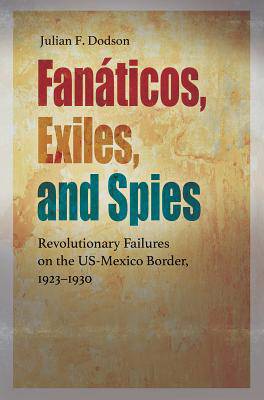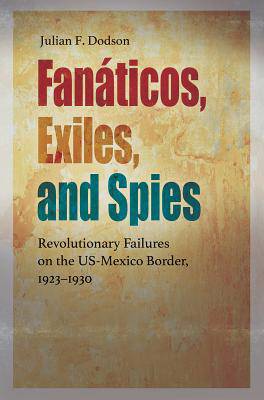
- Afhalen na 1 uur in een winkel met voorraad
- Gratis thuislevering in België vanaf € 30
- Ruim aanbod met 7 miljoen producten
- Afhalen na 1 uur in een winkel met voorraad
- Gratis thuislevering in België vanaf € 30
- Ruim aanbod met 7 miljoen producten
Zoeken
Fanáticos, Exiles, and Spies
Revolutionary Failures on the Us-Mexico Border, 1923-1930
Julian F Dodson
€ 68,95
+ 137 punten
Omschrijving
Borders and boundaries are porous, especially in the context of political revolutions. Historian Julian F. Dodson has uncovered the story of postrevolutionary Mexico's attempts to protect its northern border from various plots hatched by groups exiled in the United States. Such plots sought to overthrow the regime of President Plutarco Elías Calles in the 1920s. These borderland battles were largely fought through espionage, pitting undercover agents of the government's Departamento Confidencial against various groups of political exiles--themselves experienced spies--who were now residing in American cities such as Los Angeles, Tucson, San Antonio, and Brownsville. Fanáticos, Exiles, and Spies shows that, in successive waves, the political and military exiles of the Mexican Revolution (1910-1920) sought refuge in and continued to operate from urban centers along the international boundary. The de la Huerta rebellion of 1923 and the Cristero War of 1926-1929 defined the bloody religious conflict that dominated the decade, even as smaller rebellions bubbled up along the border, often funded by politically connected exiles. Previous scholarship has tended to treat these various rebellions as isolated episodes, but Dodson argues that the violent popular and military uprisings were not isolated at all. They were nothing less than an extension of the violence and fratricidal warfare that so distinctly marked the preceding decade of the revolution. Fanáticos, Exiles, and Spies reveals the fluidity of a border between two nations before it hardened into the political boundary we know today.
Specificaties
Betrokkenen
- Auteur(s):
- Uitgeverij:
Inhoud
- Aantal bladzijden:
- 240
- Taal:
- Engels
- Reeks:
Eigenschappen
- Productcode (EAN):
- 9781623497538
- Verschijningsdatum:
- 2/04/2019
- Uitvoering:
- Hardcover
- Formaat:
- Genaaid
- Afmetingen:
- 160 mm x 239 mm
- Gewicht:
- 521 g

Alleen bij Standaard Boekhandel
+ 137 punten op je klantenkaart van Standaard Boekhandel
Beoordelingen
We publiceren alleen reviews die voldoen aan de voorwaarden voor reviews. Bekijk onze voorwaarden voor reviews.











